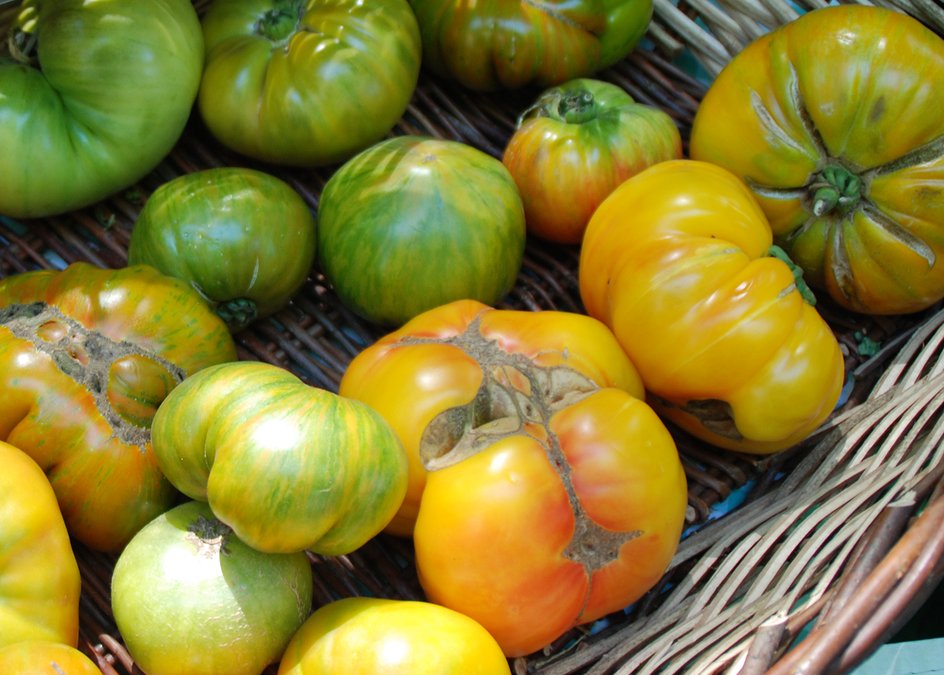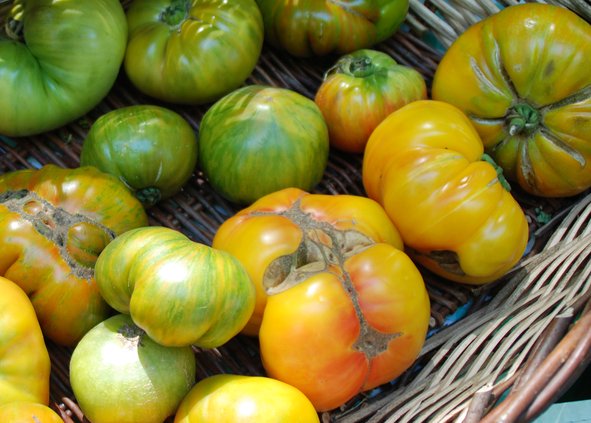Another summer of above-normal summer temperatures in much of the country may be taking its toll on your vegetable gardens. Temperature extremes can interfere with flowering and fruit set, resulting in poor flowering, blossom drop, and a lack of or misshapen fruit on tomatoes, peppers, squash, and more.
The impact of temperature on plants depends on the stage of the plant’s development. Plants ready to flower or developing fruit during times of optimum temperatures will be fine but plants that are ready to flower or develop fruit during more extreme temperatures experience problems.
Tomatoes thrive in warm, sunny conditions but when daytime temperatures rise above 90°F and night temperatures remain above 70°F blossom drop and poor fruit development may occur. This combined with low humidity and the pollen is not viable. In hot and humid conditions, the pollen is too sticky and doesn’t move from the male to the female part of the flower. Without pollination, the flowers won’t be fertilized, and fruit will not develop.
On the other hand, when night temperatures are below the optimum of 59° to 68°F, less viable pollen is produced so fewer fruit will form. Cooler temperatures below 55°F can result in misshapen fruit and cat-facing. Fortunately, this malformed fruit is still tasty and safe to eat.
Temperature extremes also impact pepper productivity. When temperatures climb to 95°F or higher, the pollen is sterile and flowers may drop. Small fruit may also fall from the plant during such hot spells. Pepper plants also experience poor fruit set when night temperatures drop below 60°F or rise above 75°F.
Flowering in squash and cucumber plants is also influenced by temperature and other environmental factors. These plants typically produce separate male and female flowers. The male flowers usually appear first, and it is not until both the male and female flowers are present that pollination, fertilization, and fruit production can occur.
The research found cool temperatures, bright sunlight, and shorter days encourage female flower production while male flowers are more prolific during warmer temperatures, less sunlight, and close spacing. Flowering on squash and cucumbers is also impacted by nitrogen fertilization. Too much can prevent female flower formation while insufficient amounts can reduce the number of male flowers.
In addition, rainy weather or improperly applied pesticides that prevent bee activity and pollination can also result in malformed cucumbers.
These aren’t the only vegetables impacted by temperature extremes. Eggplants, a close relative of tomatoes and peppers, do not set fruit until night temperatures are above 55°F. Beans stop flowering or the flowers die when temperatures rise above 85°F.
The simplest solution is to wait for optimum temperatures and proper humidity levels to return. Once this happens, the plants will begin producing fruit. Be sure to harvest regularly to keep the plants producing.
If poor productivity caused by weather is a yearly problem, consider planting varieties better suited to these extremes, adjust the planting times, and if needed, find a more suitable growing location.
When the harvest is delayed, extend the season with the help of row covers. These fabrics allow sunlight, air, and water through while trapping heat around the plants. Loosely cover the plants and anchor the edges with stones, boards, or landscape staples when frost is forecasted. You can leave the fabric in place for the remainder of the year. Just lift it to harvest and secure the fabric when done.
If this summer’s weather leaves you disappointed with the harvest, remember there is always next year.
Melinda Myers is the author of numerous books, including Small Space Gardening. Myers web site is www.MelindaMyers.com.





